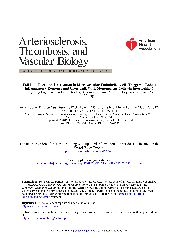摘要
Objective-It is known that toll-like receptor 4 (TLR4) plays an important role in atherosclerosis. Because both microvascular (MIC) and macrovascular (MAC) endothelial cells (ECs) are present in atherosclerotic lesions, the present study compared TLR4-triggered inflammatory response and cross talk with mononuclear cells between MIC and MAC ECs. %26lt;br%26gt;Methods and Results-ELISA, real-time polymerase chain reaction, and gene expression profiling showed that TLR4 activation by lipopolysaccharide stimulated a much higher expression of inflammatory genes including cytokines, chemokines, growth factors, and adhesion molecules in MIC ECs than MAC ECs. Furthermore, coculture studies showed that TLR4 activation in MIC ECs, but not MAC ECs, induced a cross talk with U937 mononuclear cells through MIC EC-released interleukin-6 to upregulate matrix metalloproteinase-1 expression in U937 cells. To explore molecular mechanisms underlying the different responses to TLR4 activation between MIC and MAC ECs, we showed that MIC ECs had a higher expression of TLR4 and CD14 and a higher TLR4-mediated nuclear factor-kappaB activity than MAC ECs. %26lt;br%26gt;Conclusion-The present study showed that TLR4 activation triggers a more robust inflammatory response in MIC ECs than MAC ECs. Given the importance of inflammatory cytokines and matrix metalloproteinases in plaque rupture, MIC ECs may play a key role in plaque destabilization through a TLR4-dependent mechanism. (Arterioscler Thromb Vasc Biol. 2012;32:1696-1706)
- 出版日期2012-7
